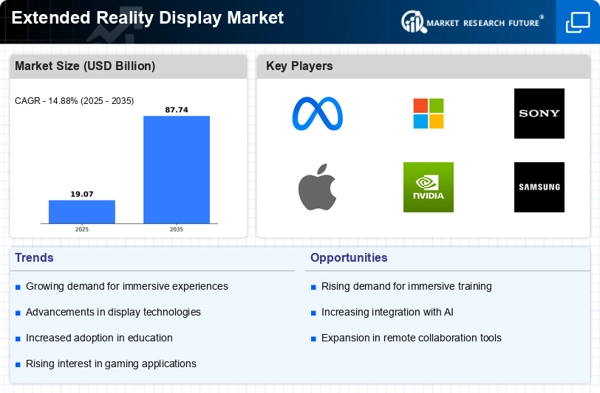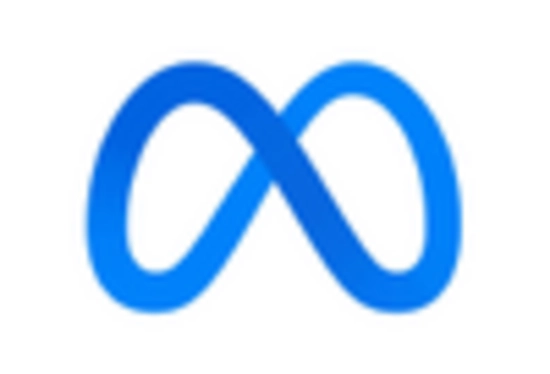The Extended Reality Display Market is currently characterized by a dynamic competitive landscape, driven by rapid technological advancements and increasing consumer demand for immersive experiences. Major players such as Meta Platforms (US), Microsoft (US), and Apple (US) are at the forefront, each adopting distinct strategies to enhance their market positioning. Meta Platforms (US) focuses on innovation through its ongoing development of the Meta Quest series, which emphasizes user engagement and social connectivity. Meanwhile, Microsoft (US) leverages its Azure cloud services to integrate augmented reality (AR) solutions into enterprise applications, thereby enhancing productivity and collaboration. Apple (US), on the other hand, appears to be concentrating on the seamless integration of its hardware and software ecosystems, potentially positioning itself as a leader in consumer-oriented extended reality (XR) experiences.
The business tactics employed by these companies reflect a concerted effort to optimize supply chains and localize manufacturing, which may enhance responsiveness to market demands. The market structure is moderately fragmented, with a mix of established players and emerging startups, each contributing to a competitive environment that fosters innovation. The collective influence of these key players is significant, as they not only drive technological advancements but also shape consumer expectations and industry standards.
In August 2025, Sony (Japan) announced a strategic partnership with a leading gaming studio to develop exclusive content for its PlayStation VR platform. This move is likely to bolster Sony's position in the gaming segment of the XR market, as exclusive content can significantly enhance user engagement and drive hardware sales. By aligning with a prominent studio, Sony may also tap into new audiences, thereby expanding its market reach.
In September 2025, NVIDIA (US) unveiled its latest graphics processing unit (GPU) designed specifically for XR applications, which is expected to enhance rendering capabilities and overall user experience. This development underscores NVIDIA's commitment to innovation and its pivotal role in the XR ecosystem. By providing cutting-edge technology, NVIDIA not only strengthens its competitive edge but also supports other companies in the market that rely on high-performance graphics for their XR solutions.
In October 2025, HTC (Taiwan) launched a new line of standalone VR headsets aimed at enterprise users, emphasizing ease of use and integration with existing business systems. This strategic pivot towards enterprise solutions indicates HTC's recognition of the growing demand for XR applications in professional settings. By catering to this segment, HTC may differentiate itself from competitors focused primarily on consumer markets, thereby carving out a niche in the rapidly evolving XR landscape.
As of October 2025, the competitive trends within the Extended Reality Display Market are increasingly defined by digitalization, sustainability, and the integration of artificial intelligence (AI). Strategic alliances among key players are shaping the landscape, fostering collaboration that enhances technological capabilities and market reach. Looking ahead, it is anticipated that competitive differentiation will evolve, shifting from traditional price-based competition to a focus on innovation, technological advancements, and supply chain reliability. This transition may ultimately redefine the parameters of success in the XR market, as companies strive to deliver unparalleled user experiences.


















Leave a Comment